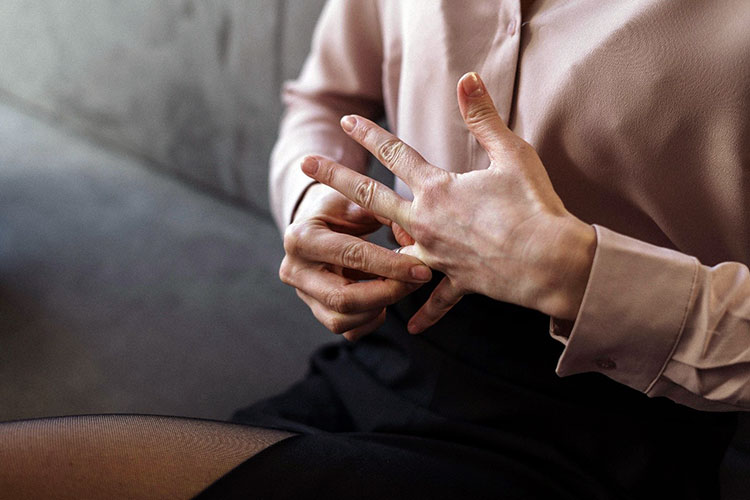What is the Burden of Proof in a Washington Car Accident?

Magnuson Lowell Blog
Each week we post a blog about relevant legal issues. Glance through our various topics to learn more about a particular legal situation.
These articles are for limited informational purposes only and are not, nor are they intended to be, legal advice. You should not rely on this information for your case and should consult with an attorney for advice regarding your individual situation.
Most Recent Posts ...
Posted on: 3/31/2025
Posted on: 3/24/2025
Posted on: 3/17/2025
Posted on: 3/10/2025
Search All Blog Posts
Blog Post Archive Categories
- Reconciling After a Divorce Filing
- Dividing Retirement in Divorce - Do I Need a QDRO?
- Options for Dealing with Real Estate in Your Washington State Divorce
- Positive Thoughts After Losing a Family Law Motion
- Supervised Visitation for Washington Parenting Plans: What You Need to Know
- Filing for Immediate Restraining Orders in King County
- (Redmond/Criminal Defense) Time Matters for a DUI
- (Redmond/Criminal Defense) Field Sobriety Tests - What Not to Do
- (Redmond/Criminal Defense) - The (Redmond/Criminal Defense) - The Ability to Remain Silent
- Battling Father Time: Crafting Your Legacy with Precision
- Tips for Talking to Your Family About Your Estate Plan
- How to Choose Your Personal Representative for your Will
- What is a Trial Continuance in Washington State?
- Renewing a Domestic Violence Protection Order in Washington State
- Little Known Washington Driving Laws
- Divorce Mediation Tips for High-Conflict Couples
- Dealing with Small Business During a Divorce
- The Role of Financial Advisors in High-Asset Divorces
- Why Expediency is Important After Your Car Accident
- Understanding Independent Medical Examinations (IMEs) in Washington State
- It only takes 3 seconds...
- Gotta love our court system!
- (Redmond/Crazy Lawsuit) The Walking Dead: or Not!
- (Redmond/Crazy Lawsuit) Here Comes Football - and Litigation
- Honoring Our Heroes: A Thank You to All Who Have Served!
- Happy Halloween from Magnuson Lowell
- 10 Tips You Need To Know Before Getting On A Motorcycle
- Top 10 Tips You Need To Know Before Getting On A Motorcycle
- Top 10 Tips Riders Need To Know Before Getting On A Motorcycle
- In a Car Collision...Now What?
What is the Burden of Proof in a Washington Car Accident?

When it comes to car accident personal injury cases in Washington State, the burden of proof is a crucial aspect that can determine the outcome of a case. The burden of proof refers to the responsibility placed on a plaintiff (the person bringing the case) to prove the elements of their case to the satisfaction of the court. In Washington State, the standard of proof in personal injury cases is "beyond a preponderance of the evidence." This means that the plaintiff must provide sufficient evidence to convince the court that it is more likely than not that the defendant (the person being sued) is responsible for the plaintiff's injuries.
This standard of proof is different from the criminal standard of proof, which is "beyond a reasonable doubt." The criminal standard of proof is a higher standard because a criminal conviction carries serious consequences, including imprisonment, fines, and a criminal record. On the other hand, a personal injury case results in monetary damages, which is why the standard of proof is lower.
It is important to note that in a personal injury case, the burden of proof always rests with the plaintiff. The defendant is not required to prove their innocence, but if the plaintiff fails to meet the burden of proof, the defendant will likely win the case. This is why it is crucial for personal injury plaintiffs to gather and present as much evidence as possible to support their case.
Let's consider a hypothetical example of a two-car accident to illustrate how the burden of proof works in a personal injury case.
Suppose Jane was driving her car on the highway when she was hit by a car driven by John. Jane suffered injuries filed a personal injury lawsuit against John. In this case, Jane is the plaintiff, and John is the defendant.
To win her case, Jane must prove John was at fault for the accident and that her injuries were a direct result of the accident. To meet this burden of proof, Jane must provide evidence such as eyewitness testimony, photographs of the scene of the accident, and medical records documenting her injuries. She must also show that her injuries were not caused by other factors.
On the other hand, John, as the defendant, is not required to prove his innocence. However, if he has evidence that refutes Jane's claims or shows that Jane was at fault for the accident, he can present this evidence in court to defend himself.
In this hypothetical example, the judge will consider all the evidence presented by both Jane and John and will determine whether Jane has met the burden of proof of "beyond a preponderance of the evidence." If the judge determines Jane met her burden, she will likely win the case and receive damages for her injuries. If the judge determines that Jane has not met the burden of proof, the case will be dismissed, and Jane will not receive any compensation for her injuries.
Understanding the burden of proof in car accident personal injury cases in Washington State is crucial for plaintiffs and defendants alike. The standard of proof in these cases is "beyond a preponderance of the evidence," which is lower than the criminal standard of proof of "beyond a reasonable doubt." It is the responsibility of the plaintiff to meet this standard, and failure to do so may result in the defendant winning the case. If you are injured in a car accident, a personal injury attorney is a vital resource to ensure your claim is properly presented. Call the experienced team at the law offices of Magnuson Lowell PS today for a free case evaluation.




